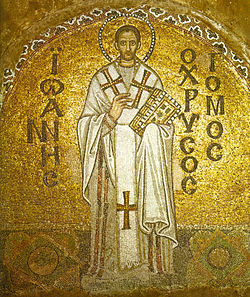
Icon: St. John Chrysostom
This Sunday, Orthodox Christians around the world celebrated Christ’s resurrection. As part of the Pascha (Easter) service, Saint John Chrysostom’s Pascha (Easter) homily is read out loud in every Orthodox parish around the world. Thus, it can be said that it is the most famous Easter sermon.
John Chrysostom (c. 347-407), Patriarch of Constantinople, was known as the greatest preacher in the early Church. He was given the name “Chrysostom” which means “golden mouth.”
- Sermon Style
What is striking about John Chrysostom’s Easter sermon is how different it is from sermons given in Evangelical and Protestant churches today. I found four significant differences.
The first difference is length. It is less than 5 minutes! Many Protestants and Evangelicals expect sermons at least half an hour in length. The attached YouTube video is only 3:45 long. But not all his sermons are that brief.
The second difference is rhetorical style. Saint John used the rhetorical devices of ancient Greece. One example is his use of anaphora, the repetition of one or more words at the head of consecutive phrases, clauses, or sentences. He begins sentences with identical clauses or phrases: “If anyone . . . ,” “Let . . . ,” “It was embittered . . . ,” then he introduce a new thought in the second half of the sentence. This generates a poetic rhythm pulsing throughout the sermon. It ebbs and flows, then reaches a soaring climax.
The third difference is theological. John Chrysostom’s sermon is based on Christus Victor. The early Christians understood Christ’s death on the Cross as his encounter with powers of evil in which he emerged the winner. Orthodoxy still holds to this theological paradigm. In the West, however, it was displaced by the satisfaction theory promulgated by Anselm of Canterbury. In Western theology, our sins have made us deserving of God’s righteous judgment, and Christ by dying on the Cross has paid the penalty on our behalf. In Orthodoxy, our sins have made us captive to the Devil, and Christ the Strong Man set us free from Death by his dying on the Cross and his third day resurrection. Thus, Protestants hearing the Christus Victor emphasis in Chrysostom’s Easter Sermon need to keep in mind that this was not a personal idiosyncrasy of his, but indicative of the theological thinking of the early Church.
The fourth difference is the Eucharistic language. Saint John’s Easter sermon is literally an “altar call,” in that he is exhorting his listeners to approach the altar where the bread and the wine have been consecrated becoming the Body and Blood of Christ. The exhortation for the faithful to come forward to receive Holy Communion can be seen in: “The table is rich-laden; feast royally, all of you!” In my experience, Evangelicals generally refrain from holding Holy Communion on Easter Sunday, even though it is the most logical thing to do. The Apostle Paul wrote: “For whenever you eat this bread and drink this cup, you proclaim the Lord’s death until he comes.” (I Corinthians 11:26)
By listening to this classic sermon Evangelicals and Reformed Christians can gain a small glimpse into the worship experience of the early Church.
-

St. Ignatius Orthodox mission in Mesa AZ. Click here.
Here is a YouTube video of an Orthodox priest reading out loud this classic sermon on Christ’s rising from the dead. It is brief, to the point, and powerful.
- Sermon Text
- If anyone is devout and a lover of God, let him enjoy this beautiful and radiant festival.
- If anyone is a wise servant, let him, rejoicing, enter into the joy of his Lord.
- If anyone has wearied himself in fasting, let him now receive his recompense.
- If anyone has labored from the first hour, let him today receive his just reward. If anyone has come at the third hour, with thanksgiving let him keep the feast. If anyone has arrived at the sixth hour, let him have no misgivings; for he shall suffer no loss. If anyone has delayed until the ninth hour, let him draw near without hesitation. If anyone has arrived even at the eleventh hour, let him not fear on account of his delay. For the Master is gracious and receives the last, even as the first; he gives rest to him that comes at the eleventh hour, just as to him who has labored from the first. He has mercy upon the last and cares for the first; to the one he gives, and to the other he is gracious. He both honors the work and praises the intention.
- Enter all of you, therefore, into the joy of our Lord, and, whether first or last, receive your reward. O rich and poor, one with another, dance for joy! O you ascetics and you negligent, celebrate the day! You that have fasted and you that have disregarded the fast, rejoice today! The table is rich-laden; feast royally, all of you! The calf is fatted; let no one go forth hungry!
- Let all partake of the feast of faith. Let all receive the riches of goodness.
- Let no one lament his poverty, for the universal kingdom has been revealed.
- Let no one mourn his transgressions, for pardon has dawned from the grave.
- Let no one fear death, for the Saviour’s death has set us free.
- He that was taken by death has annihilated it! He descended into hades and took hades captive! He embittered it when it tasted his flesh! And anticipating this Isaiah exclaimed, “Hades was embittered when it encountered thee in the lower regions.” It was embittered, for it was abolished! It was embittered, for it was mocked! It was embittered, for it was purged! It was embittered, for it was despoiled! It was embittered, for it was bound in chains!
- It took a body and, face to face, met God! It took earth and encountered heaven! It took what it saw but crumbled before what it had not seen!
- “O death, where is thy sting? O hades, where is thy victory?”
- Christ is risen, and you are overthrown!
- Christ is risen, and the demons are fallen!
- Christ is risen, and the angels rejoice!
- Christ is risen, and life reigns!
- Christ is risen, and not one dead remains in a tomb!
- For Christ, being raised from the dead, has become the First-fruits of them that slept.
- To him be glory and might unto ages of ages. Amen.
- Source: OrthodoxWiki
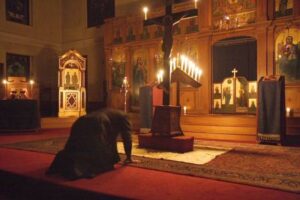
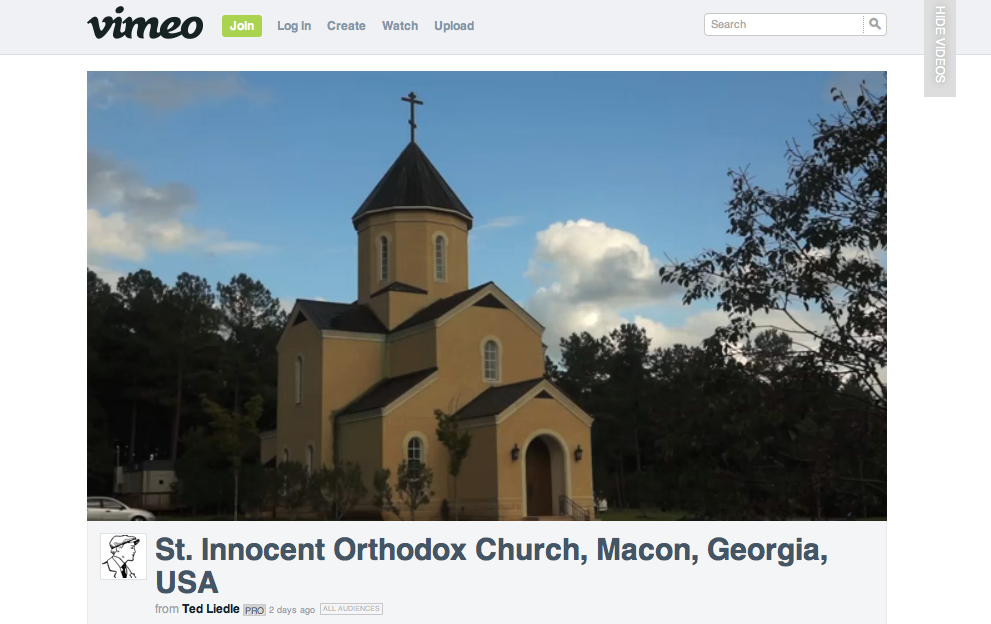
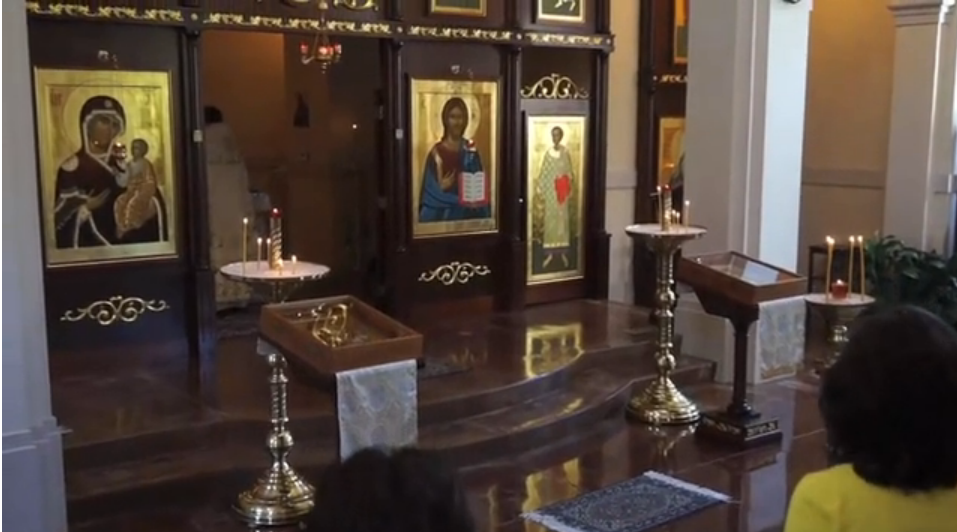

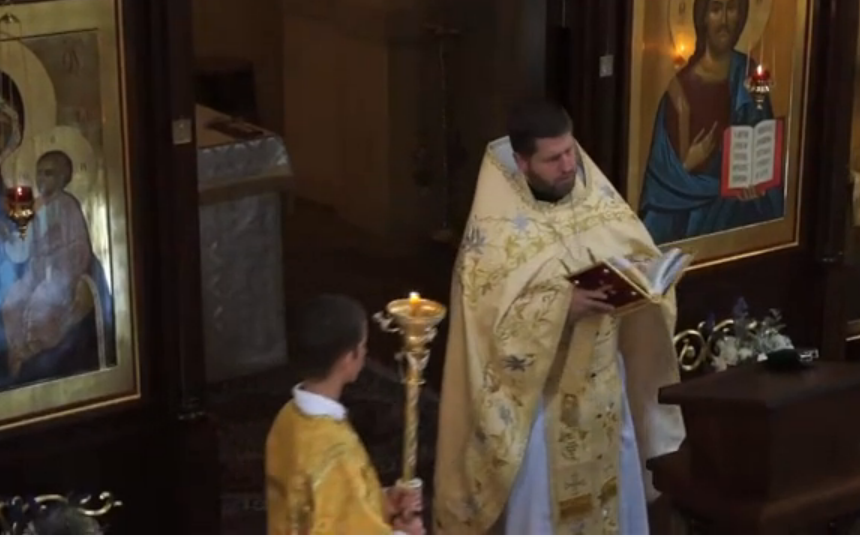
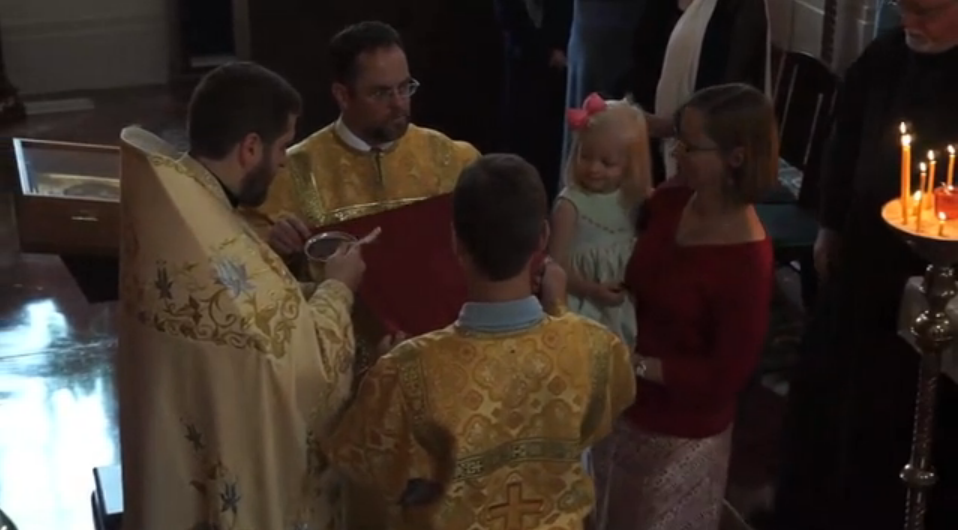
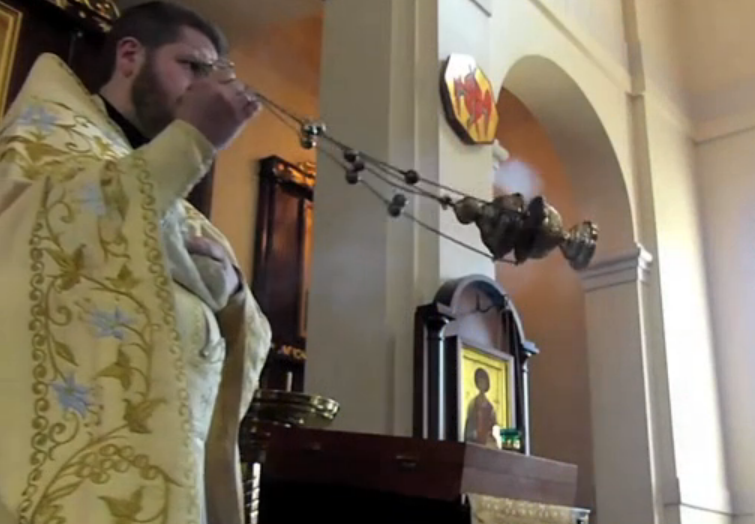
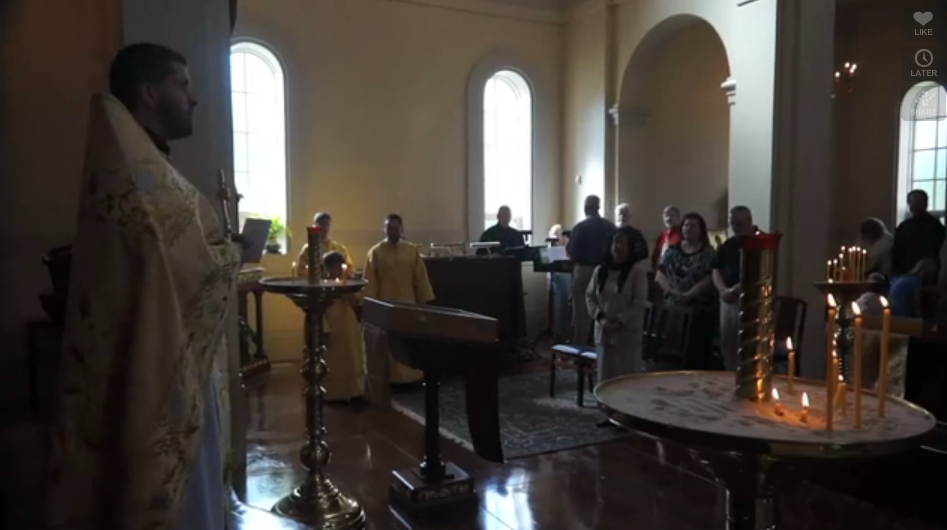

Recent Comments